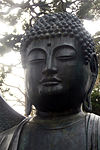
Hōnen was the religious reformer and progenitor of the first independent branch of Japanese Pure Land Buddhism called Jōdo-shū. He is also considered the Seventh Jōdo Shinshū Patriarch.

Shinran was a Japanese Buddhist monk, who was born in Hino at the turbulent close of the Heian Period and lived during the Kamakura Period. Shinran was a pupil of Hōnen and the founder of what ultimately became the Jōdo Shinshū sect of Japanese Buddhism.

Jōdo Shinshū, also known as Shin Buddhism or True Pure Land Buddhism, is a school of Pure Land Buddhism founded by the former Tendai Japanese monk Shinran.

Buddhism in Japan was first established in the 6th century CE. Most of the Japanese Buddhists belong to new schools of Buddhism which were established in the Kamakura period (1185-1333). During the Edo (Tokugawa)-period (1603–1868), Buddhism was controlled by the feudal Shogunate. The Meiji-period (1868–1912) saw a strong response against Buddhism, with persecution and a forced separation between Buddhism and Shinto.
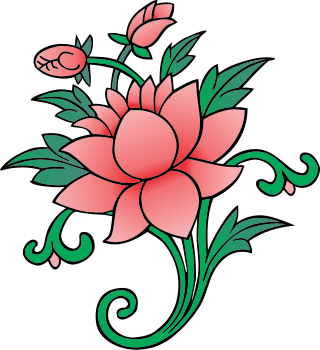
The Nianfo, alternatively in Japanese as 念仏, Korean: 염불; RR: yeombul, or in Vietnamese: niệm Phật, is a Buddhist practice central to the tradition of Pure Land Buddhism, though not exclusive to it. In the context of Pure Land practice, it typically refers to the repetition of the name of Amitābha in a ritualized form, though in some contexts it can refer instead to a more meditative practice. It is a translation of Sanskrit buddhānusmṛti.

Rennyo was the 8th Monshu of the Hongan-ji Temple of the Jōdo Shinshū sect of Buddhism, and descendant of founder Shinran. Jodo Shinshu Buddhists often referred to him as the restorer of the sect. He was also known as Shinshō-in (信証院), and posthumously Etō Daishi (慧灯大師). During the conflict of the Ōnin War and the subsequent warfare that spread throughout Japan, Rennyo was able to unite most of the disparate factions of the Jodo Shinshu sect under the Hongan-ji, reform existing liturgy and practices, and broaden support among different classes of society. Through Rennyo's efforts, Jodo Shinshu grew to become the largest, most influential Buddhist sect in Japan.

Jōdo-shū, also known as Jōdo Buddhism, is a branch of Pure Land Buddhism derived from the teachings of the Japanese ex-Tendai monk Hōnen. It was established in 1175 and is the most widely practiced branch of Buddhism in Japan, along with Jōdo Shinshū. In the general classification of Buddhism in Japan, the Jōdo-shū, the Jōdo Shinshu, the Ji-shu and the Yuzu Nembutsu shu are collectively classified into the lineage of Jōdo Buddhism.

Hongan-ji, also archaically romanized as Hongwanji, is the collective name of the largest school of Jōdo Shinshū Buddhism. 'Hongan-ji' may also refer to any one of several actual temple buildings associated with the sect. Nishi Honganji (西本願寺) and Higashi Honganji (東本願寺) are two major temples in Kyoto.
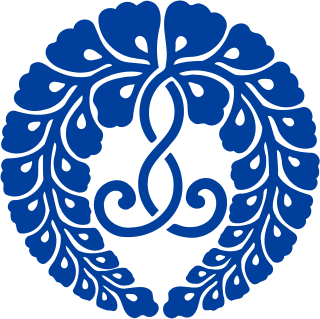
The Buddhist Churches of America is the United States branch of the Nishi Honganji subsect of Jōdo Shinshū Buddhism.
A Dharma name is a new name acquired during both lay and monastic Buddhist initiation rituals in Mahayana Buddhism and monastic ordination in Theravada Buddhism. The name is traditionally given by a Buddhist monastic, and is given to newly ordained monks, nuns and laity. Dharma names are considered aspirational, not descriptive.
The Tannishō (歎異抄), also known as the Lamentations of Divergences, is a late 13th century short Buddhist text generally thought to have been written by Yuien, a disciple of Shinran. In the Tannishō, Yuien is concerned about the rising doctrinal divergences that emerged in Jōdo Shinshū Buddhism after the death of their founder, so he wrote down dialogues between himself and Shinran that he could recall when his master was alive.

Nishi Hongan-ji (西本願寺) is a Jōdo Shinshū Buddhist temple in the Shimogyō ward of Kyoto, Japan. It serves as the head temple of the sub-sect Honganji-ha.

Bukkō-ji, also known as the "Temple of the Buddha's Light", was originally named Kōshō-ji, a Jōdo Shinshū temple in the Yamashina ward of Kyoto, which later moved to the heart of Kyoto. The temple was founded and officially opened by a disciple named Ryōgen in 1324, but by the 15th century, Bukkō-ji was the largest and most successful temple, and its network of branch temples extending throughout the provinces of western Japan. As a rival to the Hongan-ji, it received much criticism for its evangelical practices from Kakunyo the head of the Hongan-ji. Around 1481, however, Bukkō-ji became a subordinate temple to the Hongan-ji. Many of the Bukkō-ji's congregation thus became members of the Hongan-ji, thus greatly reducing the stature.
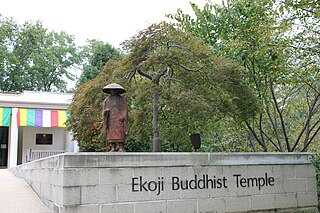
Ekoji is a temple of the Jōdo Shinshū Hongwanji-ha Japanese Buddhist sect in Fairfax Station, Virginia, near Washington, D.C. It is a member of the Buddhist Churches of America, the oldest Buddhist organization in the mainland United States.
Alfred Bloom was an American Shin Buddhism scholar, who pioneered Jōdo Shinshū studies in the English-speaking world.

Tánluán was a Chinese Buddhist monk. He is credited by Hōnen as the founder of Pure Land Buddhism in China. He is also considered the Third Patriarch of Jōdo Shinshū, a popular school of Buddhism in Japan.

Kenjōdo Shinjitsu Kyōgyōshō Monrui (顕浄土真実教行証文類), often abbreviated to Kyōgyōshinshō (教行信証), is the magnum opus of Shinran Shonin, the founder of the Japanese Buddhist sect, Jodo Shinshu. The title is often translated as The True Teaching, Practice, and Realization of the Pure Land Way in English. The work was written after Shinran's exile, and is believed to have been composed in the year 1224.
Kenneth Ken'ichi Tanaka, also known as Kenshin Tanaka or Ken'ichi Tanaka is a scholar, author, translator and ordained Jōdo Shinshū priest. He is author and editor of many articles and books on modern Buddhism.
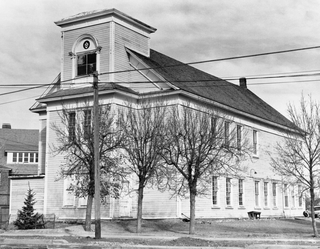
The Raymond Buddhist Church is a building in Raymond, Alberta, Canada that has been a schoolhouse, a Jōdo Shinshū Buddhist temple, and a meetinghouse of the Church of Jesus Christ of Latter-day Saints. Until it closed in 2006, it was the oldest continuously used Buddhist shrine in Canada.
Takamaro Shigaraki was a Japanese Buddhist philosopher and priest within the Honganji-ha branch of Jōdo Shinshū. Shigaraki is widely regarded as one of the most influential Buddhologists of the Jōdo Shinshū in the 20th century.
